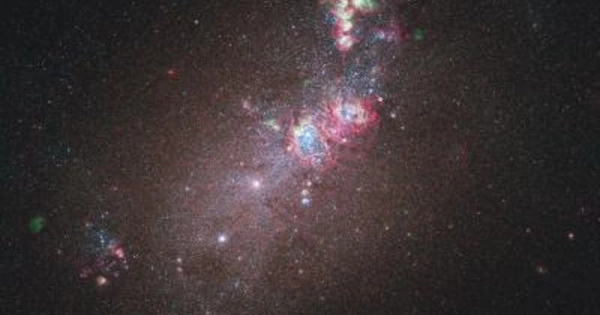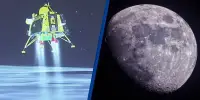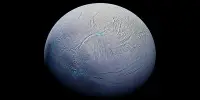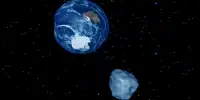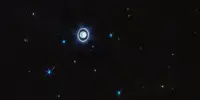NGC 4324 is a lenticular galaxy located in the constellation Virgo about 85 million light-years away. On March 4, 1862, astronomer Heinrich d’Arrest discovered it. The stellar mass of NGC 4324 is 5.62 × 1010 M☉, and the baryonic mass is 5.88 × 1010 M☉. The total mass of the galaxy is estimated to be 5.25 × 1011 M☉. NGC 4324 is distinguished by a ring of star formation surrounding its nucleus. It was assigned to the Virgo II Groups until 1999, when its distance was recalculated and it was assigned to the Virgo W Group.
Russian astronomer Kirill Ogorodnikov discovered it in 1957 and described it as “a system of planet-like concentrations similar to beads” and “equally-spaced bead-like concentrations of equal size and brightness similar to the annular nebula of Kant-Lapace nebular hypothesis.” The nucleus of NGC 4324 is surrounded by an inner ring. The ring appears complete but broken on opposite sides of its diameter, leading Burstein et al. to speculate that the ring is actually tightly wound spiral arms and that NGC 4324 is a misclassified spiral or lenticular galaxy.
Russian astronomers used the Caucasus Mountain Observatory to investigate NGC 4324, a nearby lenticular galaxy. They discovered young star-forming complexes in this galaxy’s inner ring. The findings, which were published on arXiv.org on October 14, may help us understand the formation and evolution of NGC 4324.
We decided to take full images of the galaxy NGC 4324 in narrow photometric bands centered on the Hα and [NII]λ6583 emission lines with the MaNGaL instrument—a mapper with a tunable filter…. The observations were carried out on April 17, 2018, with the 2.5-m telescope at the Caucasus Mountain Observatory.
Kirill Ogorodnikov
NGC 4324 (also known as UGC 07451) is an early-type lenticular galaxy about 66,000 light years in size, located 85 million light years away in the constellation Virgo. It has a stellar mass of approximately 56 billion solar masses, with a total mass estimated to be at least ten times greater.
Previous observations of NGC 4324 revealed that it contains a significant amount of gas and revealed its remarkable structure—a bright blue ring of star formation embedded in a large-scale stellar disk typical of lenticular galaxies.
A team of astronomers from Russia’s Lomonosov Moscow State University, led by Irina Proshina, examined the pattern of star formation in the ring of NGC 4324. They used the 2.5-m telescope at the Caucasus Mountain Observatory for this purpose. Archival images from the SDSS, GALEX, and WISE surveys were used to supplement the study.

“We decided to take full images of the galaxy NGC 4324 in narrow photometric bands centered on the Hα and [NII]λ6583 emission lines with the MaNGaL instrument—a mapper with a tunable filter…. The observations were carried out on April 17, 2018, with the 2.5-m telescope at the Caucasus Mountain Observatory,” the researchers wrote in the paper.
All in all, the study detected 18 young star-forming complexes (clumps) with a mean size of about 1,600 light years. The largest clumps turned out to have estimated stellar masses reaching 10 million solar masses.
The results suggest that the starbursts in these clumps have begun quite recently—within 10 million years. The astronomers explained that the stars that could be formed during a previous starburst that took place about 200 million years ago, cannot contribute now to the far-ultraviolet (FUV) luminosity having already exploded, or their luminosity peak has now shifted to the near-ultraviolet (NUV), leading to the observed dip in the FUV of the clumps.
According to the research, there is a regularity in the distribution of star-forming complexes in the ring of NGC 4324. This suggests that the physical star formation mechanisms over local scales are the same in spiral and lenticular galaxies. The researchers concluded that their findings confirm the hypothesis about the possible feeding of the disk in NGC 4324 with gas through the infall of gas-rich satellite galaxies or giant clouds.
“Clumps form in the ring due to gravitational instability, which ignites star formation. The subsequent star formation triggers in the gaseous ring are most likely shock waves from evolving complexes of massive OB stars—the first formed clusters of young stars in the gaseous clumps. Furthermore, the impact of a satellite or a massive gas cloud onto the galactic disk can cause another starburst. Thus, the chain of ‘gaseous clumps—star complexes’ observed by us is a chain of star formation propagation in both space (in the ring) and time “The authors of the paper elaborated.
